NSW and Queensland floods: Dairy herds swept away in floods
Paul Weir, who watched half his 300-cow herd get swept away in the floods, discovered 100 beef cattle had joined his remaining dairy cows. And now he faces the problem of finding extra feed.
Food, fuel, electricity and fodder for livestock are the top priorities for flood-affected farmers across southeast Queensland and NSW’s Northern Rivers Region today.
“Getting out to make sure people have the basics available is the priority,” EastAUSMilk co-chief executive Shaughn Morgan said.
A phone hook-up last night with farmers and Emergency Management Minister Bridget McKenzie led to more helicopters being ferried in to airlift generators, pumps and electricians into properties to restore electricity.
The Weekly Times understands Senator McKenzie is working on an assistance package that she is due to announce in Canberra tomorrow.
Coraki dairy farmer Terry Toohey, who is helping co-ordinate the local relief effort, said one of the biggest issues was finding electricians and other tradies to help setup generators and pumps so that cows can be brought in to milk.
“We have three farmers who still don’t have generators,” Mr Toohey said.
“It’s hard for people to imagine the destruction out here.”
Fuel shortages have also hit the NSW Northern Rivers region, with diesel and petrol purchases being limited to $50 a tank in Lismore.
Milk tankers and fodder trucks are also facing problems getting into farms after flood damage forced road authorities to cut bridge load limits to five tonnes.
Some farmers are also looking to source feed, for not only their own but other producers’ livestock that has simply swum in to join their herds.
Paul Weir, who lost half his 300-cow herd in the floods, went out to feed his heifers and dry cows to discover an extra 100 beef cattle had joined them.
While he had no idea where they came from, Mr Weir now faces the problem of feeding far more cattle on one of the few high point on the property, which has already turned into a quagmire.
Mr Toohey said looters had also appeared in Lismore.
“One employee walked into his house with flatmates where they found these blokes going through the house and the house next door,” Mr Toohey said.
Disposing of cattle carcasses has also become a priority as floodwaters subside, with the NSW Environment Protection Authority working with farmers and the state’s Department of Primary Industries.
Further north in Queensland, farmers in the state’s southeast are seeking support to clean up properties and fencing.
BlazeAid national operations manager Melissa Jones said she was trying to set up camps in the Lockyer Valley, Gympie and the Beaudesert regions, having already secured a site in Casino, NSW, which would be sending out fencing teams on Monday.
“We need volunteers and donations, which have really dropped of with Covid” Ms Jones said.
Donations can be made to BlazeAid HERE.
Other groups offering support include Drought Angels, with farmers able get relief payments of $1500 by calling 07 4662 7371 or by filling in the form HERE, while donations can be made HERE.
The Queensland and NSW Government is also asking farmers to fill out damage assessment forms to help them direct assistance, they can be found:
Click HERE for Queensland farmers.
Click HERE for NSW farmers
Support lines also operate in Queensland on 13 25 23
NSW on 1800 814 647
MARCH 2: FLOODWATER BACK UP
Floodwaters are backing up at the junction of the Richmond and Wilsons Rivers in NSW, inundating the Coraki region all the way downstream to Ballina, after parts of the region recorded 1250 mmm in five days.
“That’s 10 inches a day for five days,” EastAUSMilk dairy farmer advocacy group vice-president Graham Forbes said.
“Floodwaters are receding at Lismore, but it’s the lower section of the Richmond River to Ballina that’s being hit now, with one farmer losing at least 50 cows. The lower floodplain is completely inundated.”
Upper Richmond River farmer Terry Toohey, said floodwaters were backing up at Coraki, where the swollen Wilsons River from Lismore met the Richmond River.
“One fella milks 450 Jerseys, who hadn’t lost many by last night, but his generator had taken water, so they’re flying in another generator and electrician to wire it up so he can milk,” Mr Toohey said.
“One of the main concerns in the lower catchment is that water is going to be sitting there for days (as it slows down and spreads out)”
He said the farmers most immediate needs were gaining access to power, fodder and workers.
“I have three staff, but none of them are here,” Mr Toohey said. “We need experienced people to help.”
“I hope there’s some retired farmers in the Casino, Lismore areas who might be able to help.”
EastAUSMilk is already working with NSW and Queensland primary industries departments to co-ordinate support.
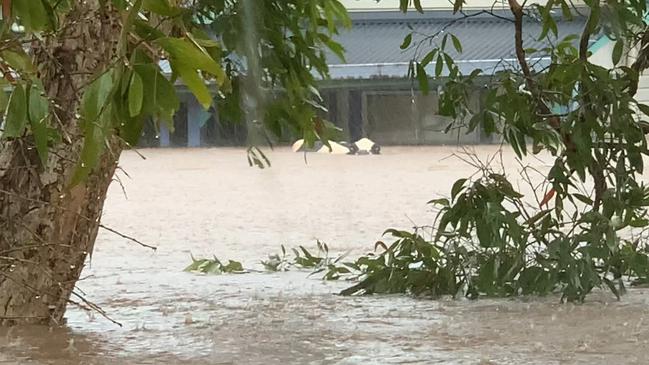
DALWOOD:
At Dalwood, about 20km southeast of Lismore, NSW Farmers branch chair and macadamia farmer Warren Elvery said the biggest issue affected people was a lack of fuel and food.
And with the Princes Highway cut off in a number of locations, the already strained road freight system is struggling to access townships which need supplies.
“It hasn’t even peaked yet,” Mr Elvery said.
“There’s been people who have lost their dairy herds, their beef cattle … they’re really feeling it, and whole livelihoods have been lost.
“Cattle has been lost from Lismore, and they’re finding them washed up by the side of the river in Ballina.”
Mr Elvery, who runs a macadamia farm at Dalwood, said he was still in the midst of surveying the damage to his own property, with a number of his staff unable to attend work due to being affected by the floods.
“We couldn’t go in via the ute, we had to go in on tractor, because of the damage, and because of the water,” Mr Elvery said.
He estimated a crop loss of about 25 per cent.
“The hardest part is we’ve spent hundreds of thousands of dollars increasing the quality of the soil, building up the soil carbon … basically we’re looking at bare dirt, it’s gone.”
The biggest issue immediately facing people in flood affected regions, Mr Elvery said, was a lack of fuel and food.
“The highways are blocked, the trucks can’t get in, but once they do come in, we’ll need not a normal amount, as everyone’s run out,” Mr Elvery said.
“We need about four to five times the amount.”
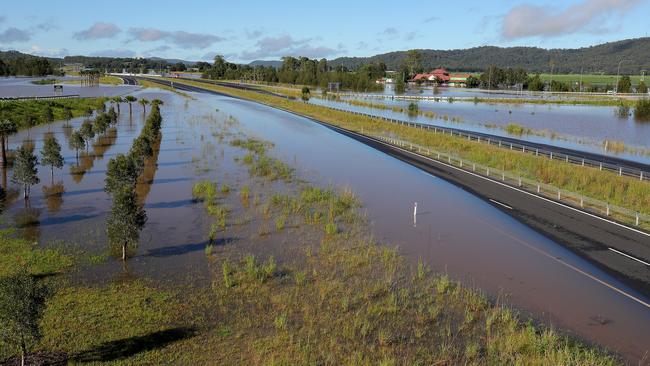
SUPPORT:
A NSW Emergency Response Hotline 1800 814 647 has been set up to assist farmers with immediate support and deal with animal welfare issues, but Mr Forbes said he received a recorded message when he called at 7:30 this morning stating it only operated from 8am to 8pm.
EastAUSMilk co-chief executive Shaughn Morgan told The Weekly Times he had contacted NSW Agriculture Minister Dougald Saunders this morning and was assured the hours would be extended.
In the meantime Drought Angels founder Tash Johnston said the group was offering farmers $1500 emergency relief grants, which could be accessed by calling 07 4662 7371.
“We have up to $100,000 currently available for $1500 relief payments, (but) that's 66 farmers at the moment we can help,” Ms Johnston said. “With our flood appeal we hope to be able to help a lot more.”
Tax deductible donations can also be made to the Drought Angels by visiting their website.
In the meantime Mr Forbes said the flood damage bill was soaring from what are regarded as the worst floods to hit the NSW Northern Rivers on record.
He said Lismore-based NORCO dairy co-operative’s feed mill had been decommissioned and its local ice-cream factory flooded to a height of four to five metres, washing through critical processing lines that were undergoing a $30m upgrade.
“It’s the largest commercial employer in Lismore, with 400 workers,” Mr Forbes said.
He said further north in Queensland floodwaters have subsided in most of the hard hit areas – the Lockyer Valley, Beaudesert and Gympie – with milk tankers getting back in to pick up milk.
“There’s still some road slips that tankers have to get around and the Lactalis factory opened up again in Brisbane yesterday.”
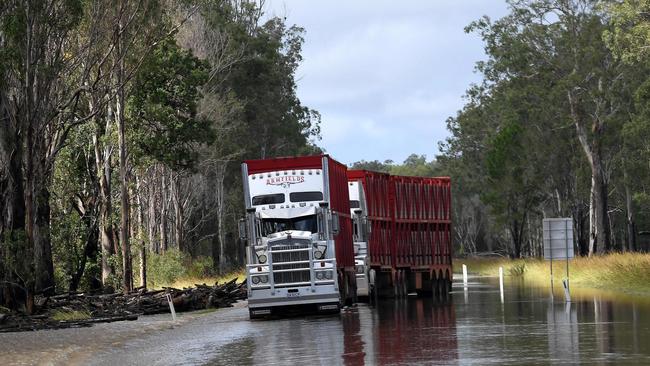
MARCH 1: DAIRY HERD SWEPT AWAY
Dairy farmers are counting the cost of the rain bomb that hit southeast Queensland and northern NSW, with whole herds swept away by floodwaters.
Lismore dairy farmer Paul Weir watched in despair late yesterday as half his 300-cow herd was swept away by floodwaters that partly submerged his dairy, peaking two metres above the previous all-time record.
“My son (Matthew) swam across to the shed to get his jet ski off the trailer and evacuated the wife and I across the river,” Mr Weir said.
“He then went to the tenants house and got them, then town to get his younger brother and mates off a roof.”
But there was some good news for the Weirs, with Paul and his sons finding 150 of their cows had survived the night, which he was able to feed.
“Our cows are fairly distinctive with heat detection collars and I put a message out last night to people if they found them.
“I’ve had a few people respond and they found one near Bunnings (in town).”
As for help Mr Weir said he had already received three or four calls from other farmers offering fodder and another who offered to take part of the herd to milk.
He said there were other farmers further downstream he was worried about, but yet to hear how they had fared.
“It’s a major catastrophe for Lismore, (with) water up to the roof on more than 1000 houses.
“Where are they going to live until their houses are deemed safe to live in.”
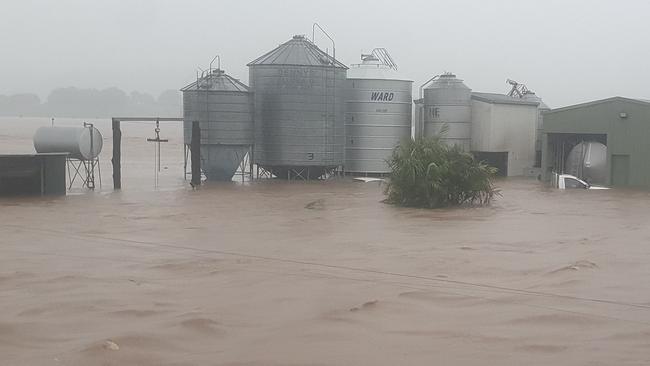
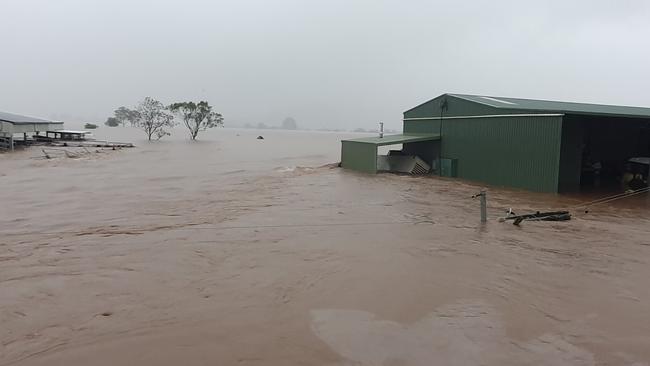
EastAUSmilk vice president Graham Forbes and NORCO dairy farmer supplier said the Wilson River had flooded the Co-op’s Lismore ice-cream factory, which employed 400 locals.
As the dairy advocacy group for the region EastAUSmilk helped co-ordinate a meeting of about 30 people from various government agencies to assess the flood impacts across Queensland and NSW Northern Rivers.
A NSW Emergency Response Hotline has been set up for farmers – 1800 814 647, to assist farmers with immediate support and deal with animal welfare issues.
Mr Forbes said saving lives was the immediate priority as rain continued, then it would be a matter of assessing the damage and ensuring fodder was made available.
This morning’s briefing heard that milk tanker access to farms was a major issue in Queensland’s Lockyer Valley, at Beaudesert and one of the hardest hit regions – Gympie.
EastAUSmilk Co-chief executive Shaughn Morgan said some farmers were already dumping milk, but its hoped roads could re-open soon to get tankers in.
He said at this stage reports were coming in of two to three herds being lost, while Mr Forbes said he had heard early reports of others being lost.
In NSW the hardest hit areas outside of Lismore are the Casino and Taree.




